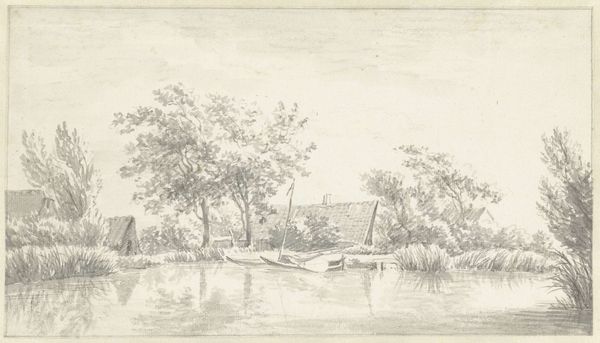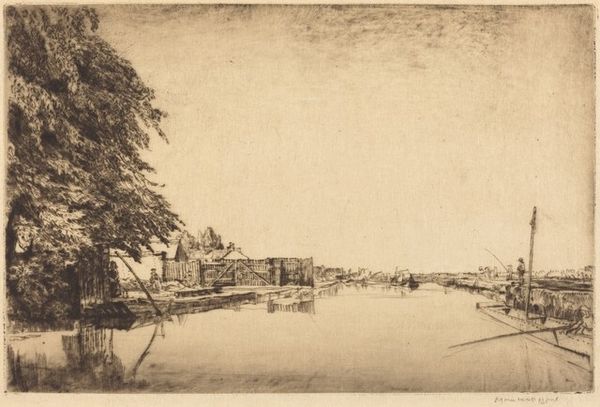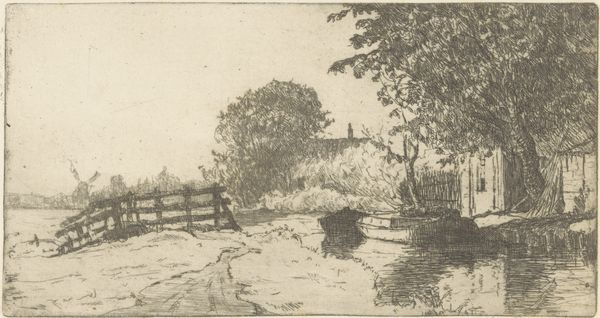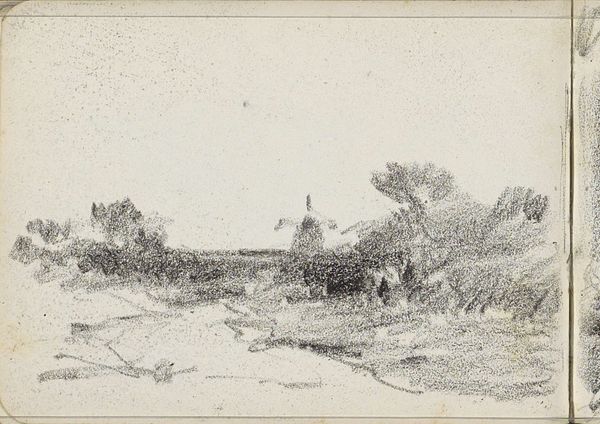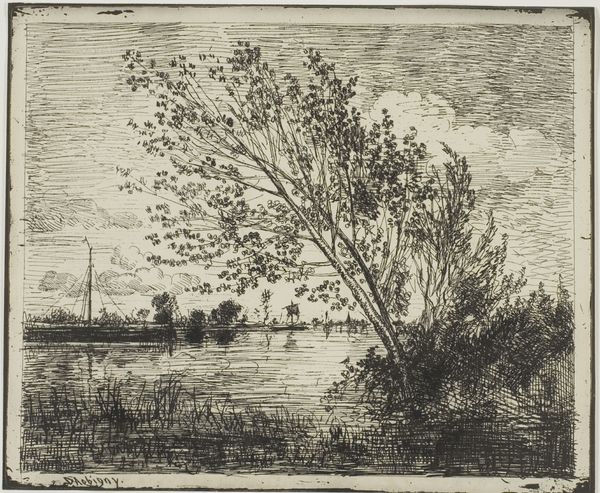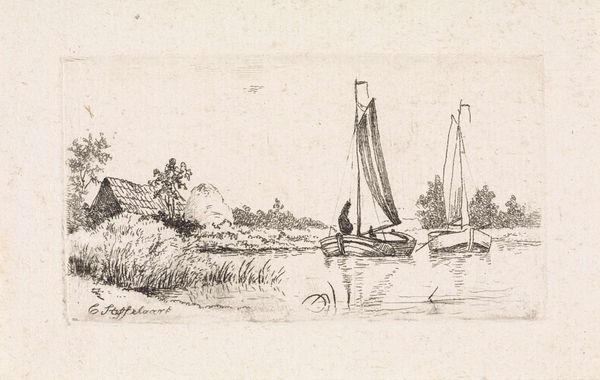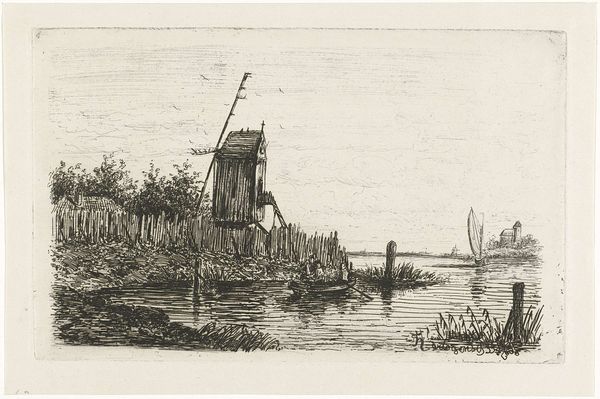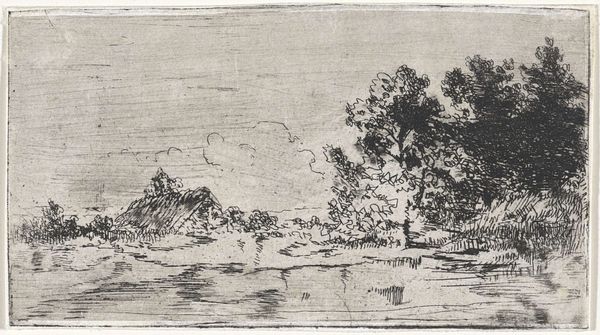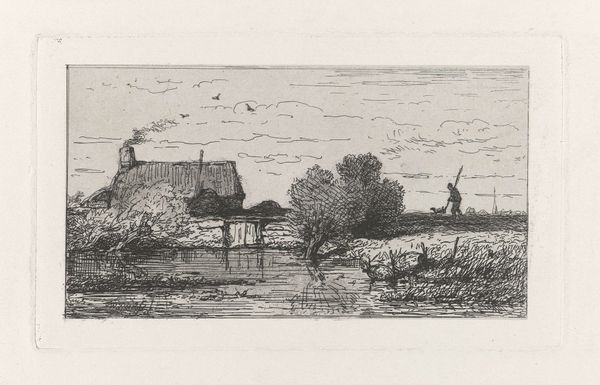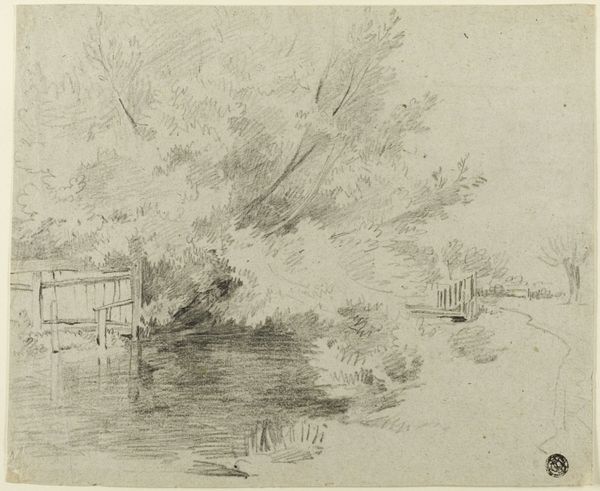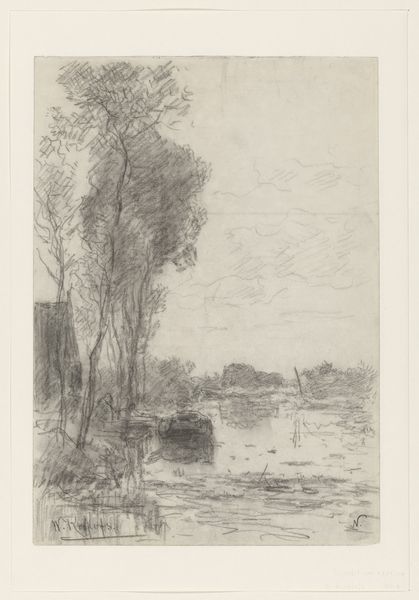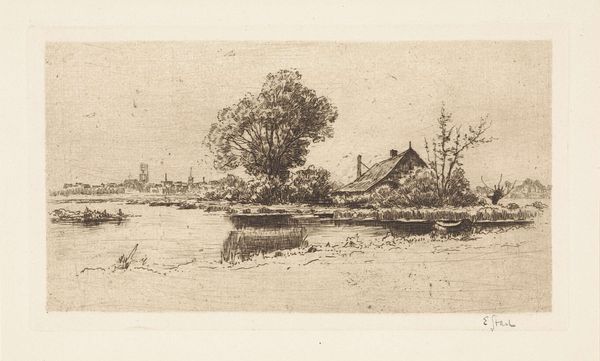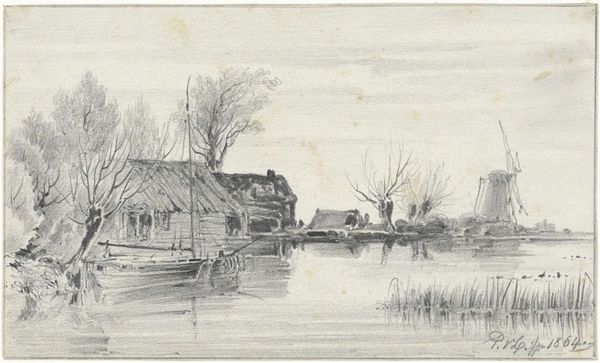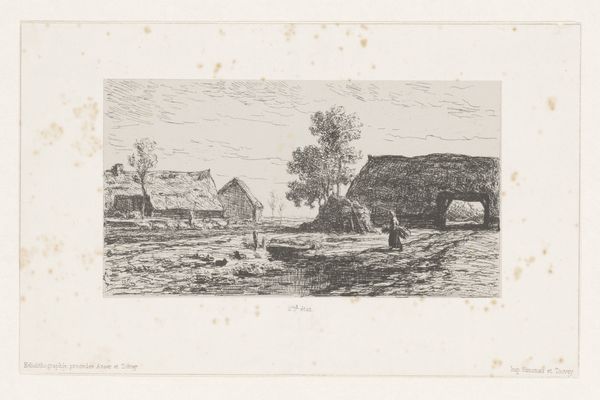
print, etching
#
dutch-golden-age
# print
#
etching
#
landscape
#
realism
Dimensions: height 104 mm, width 187 mm
Copyright: Rijks Museum: Open Domain
Curator: Right now, we’re standing in front of a print titled "Stal in de Binckhorst in Den Haag," or "Stable in the Binckhorst in The Hague," created in 1914 by Willem Adrianus Grondhout. It’s an etching, rendered with remarkable detail despite its small scale. Editor: My first thought is how still it feels. It's more of a hushed stillness than peace... does that make sense? A place caught in a pause. The subtle lines create such a calm mood. Curator: Absolutely, and Grondhout masterfully utilizes the etching technique to create this very effect. Notice how he varies the density of lines to define form and texture—the rough thatch of the roof against the smoother surface of the water. There is a semiotic visual rhetoric in play. Editor: It’s like a memory, or a fleeting glance. I’m intrigued by the lone figure atop the stable, so tiny. Are they watching something, waiting? Is it a human figure? It seems almost like a symbolic detail to convey existential themes related to loneliness in nature, to illustrate one individual’s place in a greater cosmology. It gives this work much meaning despite being an etching. Curator: I’d say that tension between specificity and universality is a hallmark of Dutch Realism and something Grondhout seemed keenly aware of. Editor: Yes, I would say that this artist wants us to stop and contemplate a time gone by; this could be from decades or a century before even the date it was printed in. There are many landscapes that may go unnoticed by people who never stopped to observe, and Willem is asking us to reflect. Do we also feel this sort of silence too? Curator: Precisely! We must also be conscious that prints allow art to become accessible to more people, to democratize representation... that the artist offers us the ordinary as a site of visual and philosophical discovery. Editor: You're right. I appreciate the nuance in how something so straightforward—a stable in a field—can become a meditative experience. I will think differently about where and how this piece belongs within Dutch art and landscape traditions. Curator: Yes, this little etching gives much pause for thought and contemplation, doesn't it? A final thought on Willem; perhaps we shouldn't allow such a simple piece be deemed "understated". Its impact can be quite significant.
Comments
No comments
Be the first to comment and join the conversation on the ultimate creative platform.
